In Kathmandu, cremation rites, especially at the iconic Pashupatinath Temple, embody deep spiritual significance within Hindu culture. Families honor their loved ones through a carefully orchestrated process, involving traditional rituals and heartfelt prayers that guide the soul’s journey. As flames consume the wooden pyre, the connection between this life and the next becomes palpable. Yet, the ritual extends beyond mere ceremony; it intertwines with the cultural importance of the sacred Bagmati River. There’s much more to explore about these rites and their impact on both locals and visitors alike.
Key Points
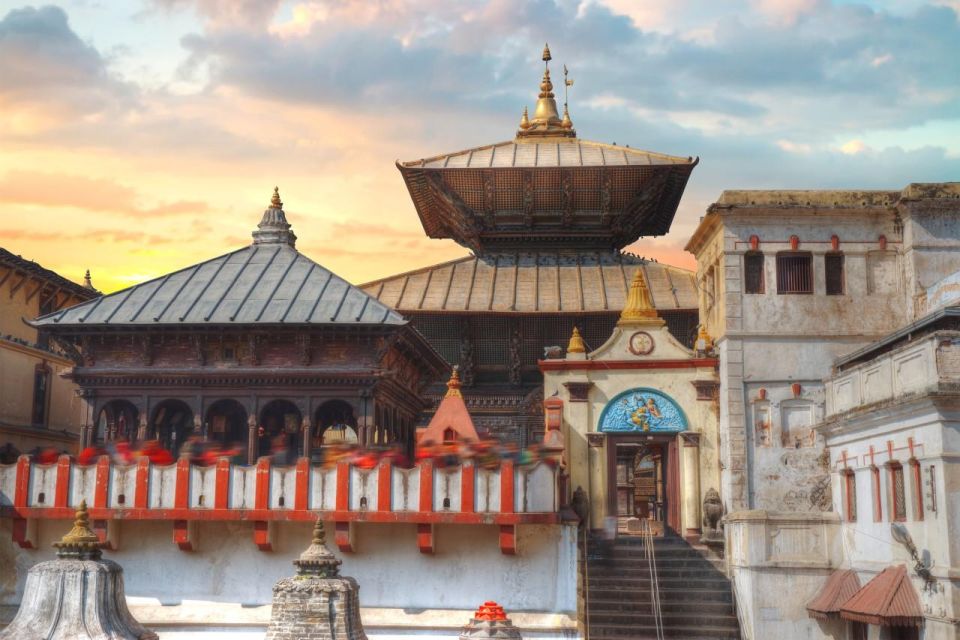
- Cremation in Kathmandu, particularly at Pashupatinath Temple, symbolizes the soul’s release and journey towards moksha, or spiritual liberation.
- The cremation process involves bathing the body, dressing it in white, and placing it on a wooden pyre for burning.
- Family members circle the pyre three times and ignite it, accompanied by chanting and prayers for the departed’s spiritual guidance.
- Ashes and bones are collected post-cremation and scattered in the sacred Bagmati River, believed to purify the deceased’s soul.
- Observing cremation rites respectfully is essential; visitors should maintain distance, dress modestly, and avoid intrusive behavior during ceremonies.
It's also worth checking out some other tours and experiences nearby.
Significance of Cremation in Hinduism
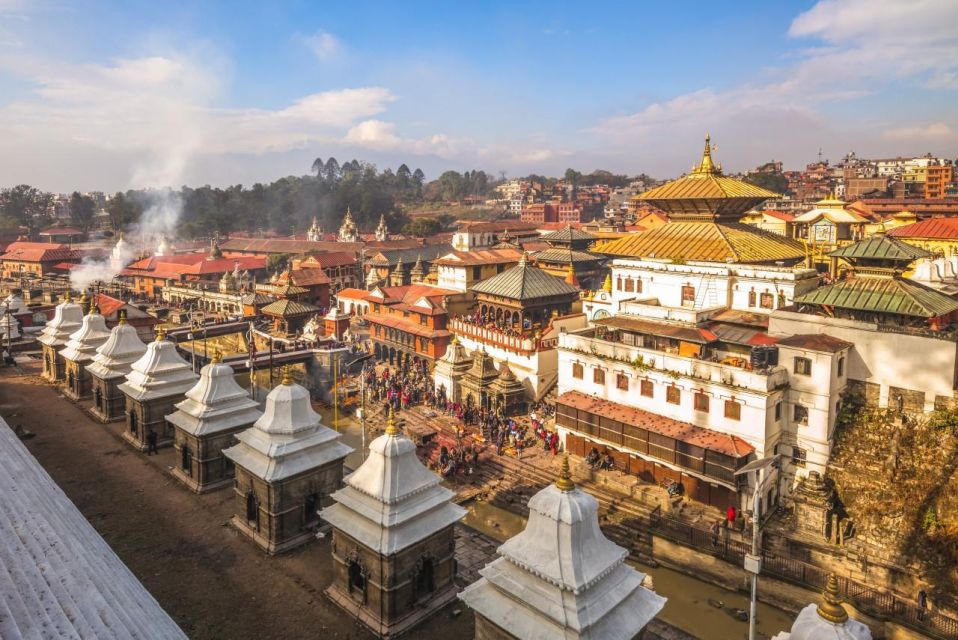
Cremation holds profound significance in Hinduism, symbolizing the soul’s journey towards liberation and the cycle of life and death.
Hindus believe that when a person dies, their physical body is merely a temporary vessel. The act of cremation allows the soul to be released from this vessel, enabling it to attain moksha, or spiritual liberation. This process isn’t just an end; it’s a transition to a new beginning.
The flames are seen as purifying, consuming the physical form and facilitating the soul’s ascent to the spiritual realm. Family members participate in the rituals, honoring their loved ones while also acknowledging the inevitability of death.
In essence, cremation reflects deep spiritual beliefs central to Hindu philosophy and tradition.
Overview of Pashupatinath Temple
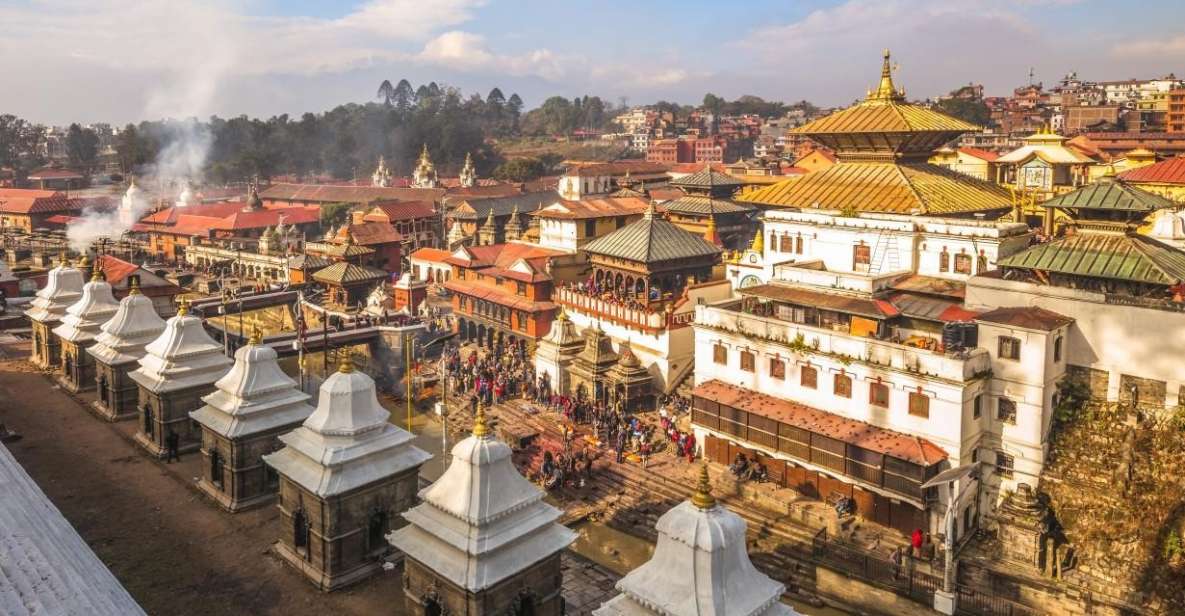
Pashupatinath Temple, revered as one of the most significant Hindu shrines in the world, attracts countless devotees and visitors who come to experience its rich spiritual heritage and stunning architecture.
Situated along the sacred Bagmati River in Kathmandu, this UNESCO World Heritage site showcases intricate carvings, majestic pagoda-style structures, and a vibrant atmosphere filled with spiritual energy.
The temple is dedicated to Lord Shiva and is a pivotal site for Hindu cremation rites.
Visitors often encounter sadhus, or holy men, who add to the temple’s mystique.
Exploring its grounds provides a unique glimpse into Nepal’s cultural and religious traditions, making it a must-visit destination for anyone interested in understanding the profound significance of Hinduism.
The Cremation Process Explained
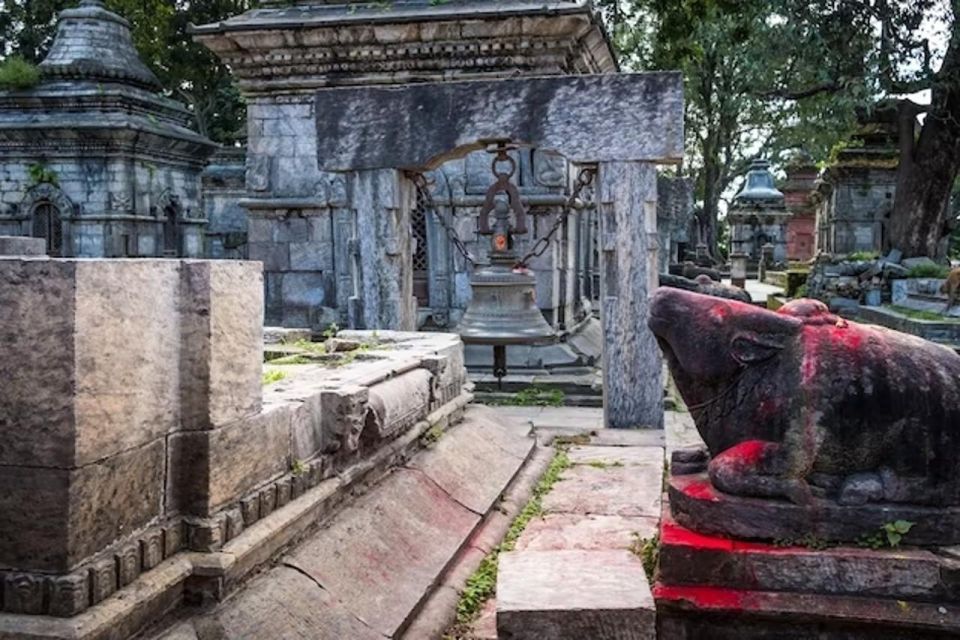
During the cremation process at this sacred site, families perform a series of rituals that honor the deceased while adhering to age-old Hindu traditions.
First, they bathe and dress the body in ceremonial attire, often choosing white for purity.
Next, they place the body on a wooden pyre, usually made of sandalwood, which symbolizes the soul’s journey.
Family members then circle the pyre three times, lighting it with a flaming branch.
As the flames consume the body, chanting and prayers fill the air, offering spiritual guidance for the departed.
After the cremation, relatives collect the ashes and bones, which they later scatter in the Bagmati River, completing the sacred cycle and ensuring the loved one’s peaceful transition into the afterlife.
Cultural Importance of the Bagmati River
The Bagmati River holds profound cultural significance for the Hindu community, serving as a sacred waterway that facilitates spiritual rituals and rites of passage.
It’s believed that the river purifies the souls of the deceased, making it essential for cremation practices. Families often gather along its banks to pay respect and perform last rites, ensuring their loved ones transition peacefully into the afterlife.
The river’s banks are adorned with temples and shrines, reinforcing its spiritual status. Locals and visitors alike recognize its importance, participating in rituals that honor both the living and the dead.
In essence, the Bagmati River embodies the connection between life and death, making it a vital element of Kathmandu’s cultural landscape.
Observing the Rituals Safely
When observing the cremation rituals along the Bagmati River, it’s essential to maintain a respectful distance to honor the solemnity of the ceremonies. Visitors should be mindful of the grieving families and the spiritual significance of the rites.
It’s best to avoid intrusive photography or loud conversations, as these can disrupt the atmosphere. Wearing modest clothing shows respect for the cultural practices, and keeping personal belongings secure ensures a worry-free experience.
Always listen to local guides, who can provide valuable insights and help navigate the site safely. By understanding and respecting these customs, observers can appreciate the deep spiritual meaning behind the rituals while ensuring a respectful presence during this profound moment in the lives of those mourning.
Tour Details and Pricing
Exploring the profound experience of witnessing cremation rites in Kathmandu is made accessible through a well-structured tour, starting at just K₨1,135 per person. This three-hour journey includes a visit to the iconic Pashupatinath Temple, where participants can observe the sacred ceremonies along the Bagmati River.
Tours are available in multiple languages, including English, Japanese, Chinese, French, and Hindi, ensuring a broader understanding of the rituals. Guests enjoy the convenience of pickup from Thamel and can book their spot with no upfront payment, plus a full refund available for cancellations made 24 hours in advance.
Inclusions like a professional guide, entrance fee, and mineral water enhance the experience, making it both enriching and memorable.
Additional Experiences at Pashupatinath
Visitors can enjoy a variety of enriching experiences at Pashupatinath, beyond just witnessing the cremation rites.
They can explore the stunning architecture of the temple complex, which showcases intricate carvings and a rich history. Encountering sadhus—holy men adorned in vibrant orange robes—adds a unique spiritual dimension to their visit. These figures often share wisdom and engage with curious travelers.
Plus, the serene atmosphere around the Bagmati River invites reflection and contemplation. As they stroll through the sacred grounds, visitors can also learn about the cultural significance of the rituals, deepening their understanding of Hindu beliefs.
Each experience at Pashupatinath offers a glimpse into the vibrant tapestry of Nepalese spirituality and tradition.
Practical Tips for Visitors
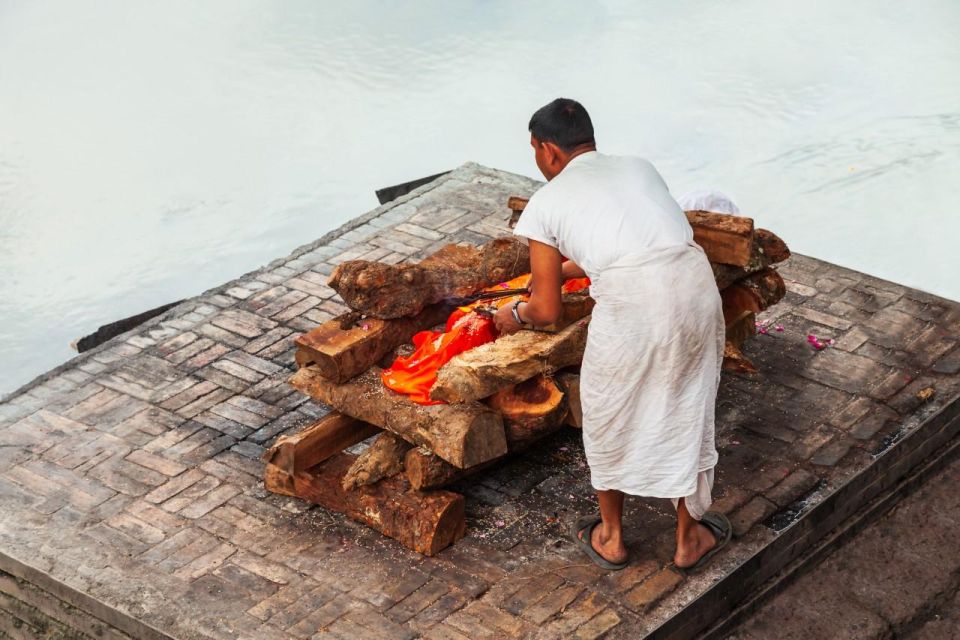
To make the most of their visit to Pashupatinath, travelers should dress modestly, respecting the sacred nature of the site while ensuring comfort during their exploration.
It’s essential to keep in mind that this is a religious area, so covering shoulders and knees is advisable.
Visitors should also consider the following practical tips:
-
Stay Hydrated: Carry a water bottle, especially in warmer months.
-
Respect Local Customs: Avoid taking photos during the cremation ceremonies unless permitted.
-
Plan for Time: Allocate sufficient time to fully appreciate the temple complex and its surroundings.
Here's a few more nearby tours and experiences we think you'll like.
Frequently Asked Questions
What Should I Wear for a Visit to Pashupatinath?
For a visit to Pashupatinath, she should wear modest clothing, covering shoulders and knees. Lightweight fabrics are ideal for comfort. Comfortable shoes help, too, as she’ll likely walk through the temple complex and surrounding areas.
Are Photography and Video Recording Allowed During the Rituals?
Visitors often wonder about photography and video recording during rituals. While some areas permit it, others respect privacy and solemnity. It’s best to ask guides for specific guidelines to ensure respectful participation and understanding.
Can I Participate in the Rituals or Ceremonies?
He can’t participate in the rituals, as they’re sacred and reserved for family members. However, he can observe respectfully, gaining a deeper understanding of the ceremonies and their significance within the cultural context.
Is There a Specific Time for Cremation Ceremonies?
There’s no specific time for cremation ceremonies; they generally occur throughout the day. Visitors often find early mornings or late afternoons particularly poignant, as these times tend to witness a higher number of rituals.
Are There Any Restrictions for Children at Pashupatinath?
Visitors should know that Pashupatinath doesn’t have strict age restrictions for children. However, parents often prefer to guide their kids, ensuring they understand the cultural significance and sensitivity surrounding the rituals taking place.
Not for you? Here's more of our most recent tour reviews happening neaby
- Sarngkot Sunrise Himalayas Tour in Pokhara
- LOD Club Night
- Nagakot Sunrise Tour
- Shopping in Kathmandu
- Holi Celebration in Nepal (1 Day)
- Best Half Day Cooking Class in Thamel Kathmandu With Pickup
- Kathmandu City Tour – Major Highlights of Kathmandu Valley
- Kathmandu-Pokhara (Deluxe Tourist AC Sofa Bus)
- Kathmandu: Private Custom Tour With a Local Guide
- Kathmandu World Heritages City Tours
- Kathmandu to Pokhara Sofa Seat- Relaiable Int. Bus
- Kathmandu: Bandipur Tourist Bus Ticket
- Kathmandu Old City and Swoyambhunath Stupa 4-Hour Tour
- Kathmandu: Nagarkot Sunrise View Private Tour
- Langtang Valley Trek in 5 Days
Recap
To sum it up, witnessing the cremation rites at Pashupatinath Temple offers a profound glimpse into Hindu beliefs surrounding life and death.
These rituals, steeped in tradition and spirituality, highlight the connection between the living and the deceased.
Visitors can gain valuable insights while respecting the solemnity of the ceremonies.
By embracing the cultural richness of this experience, one can appreciate the deeper meanings of life, death, and the sacred journey that follows.
